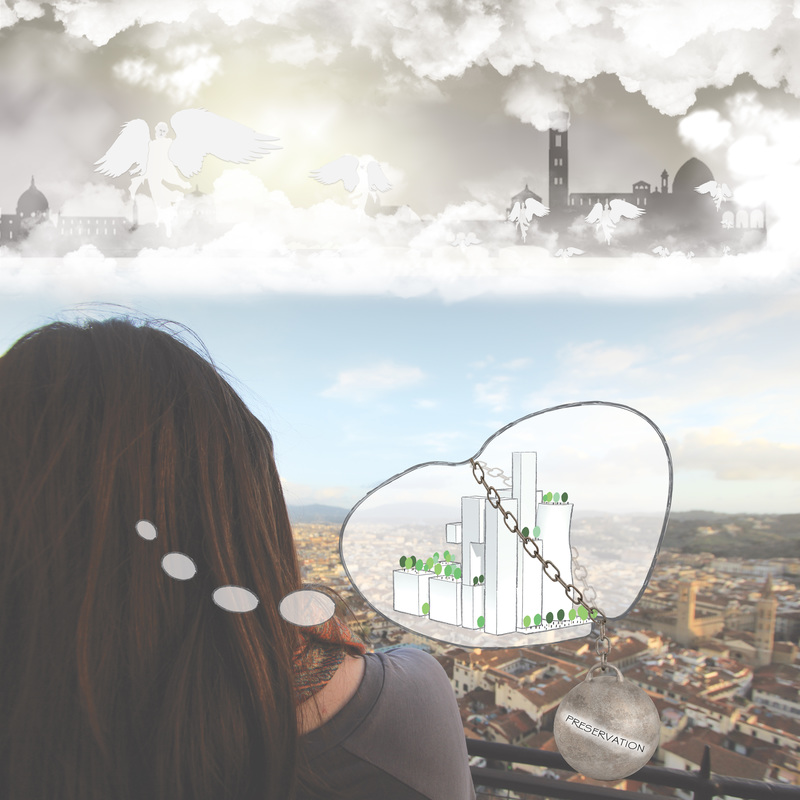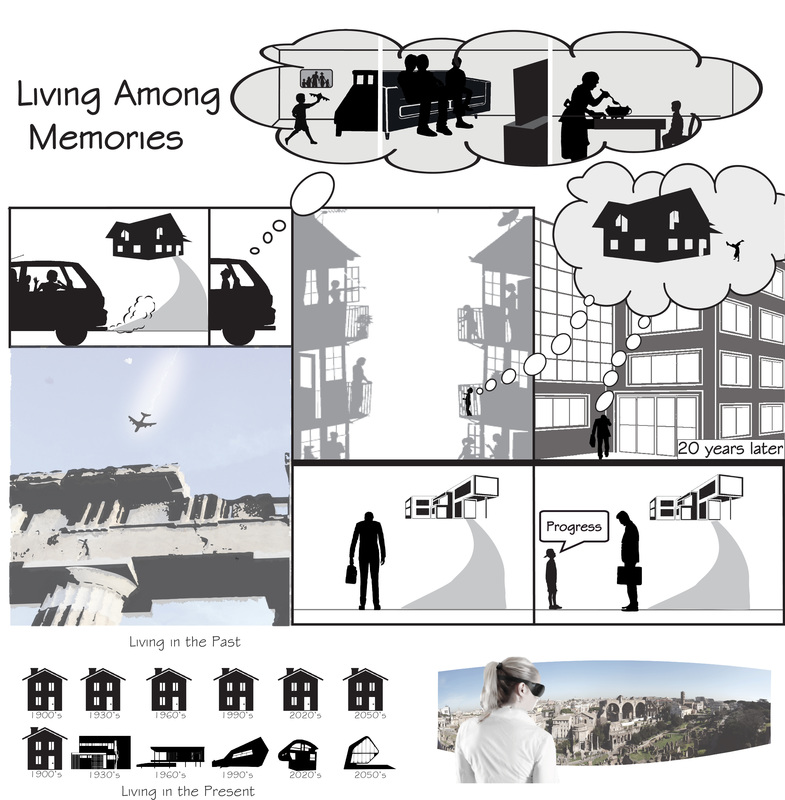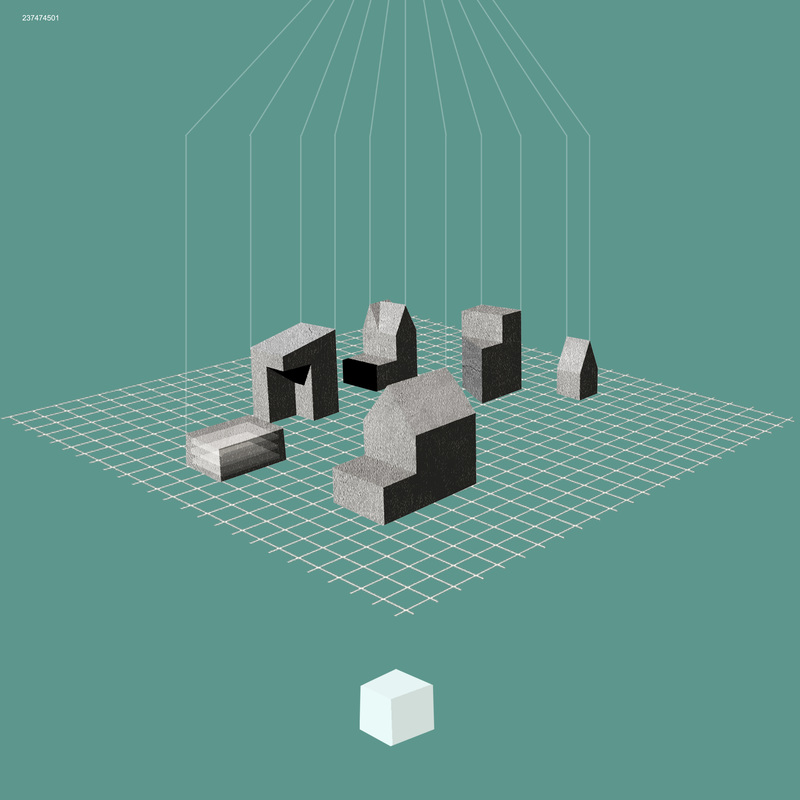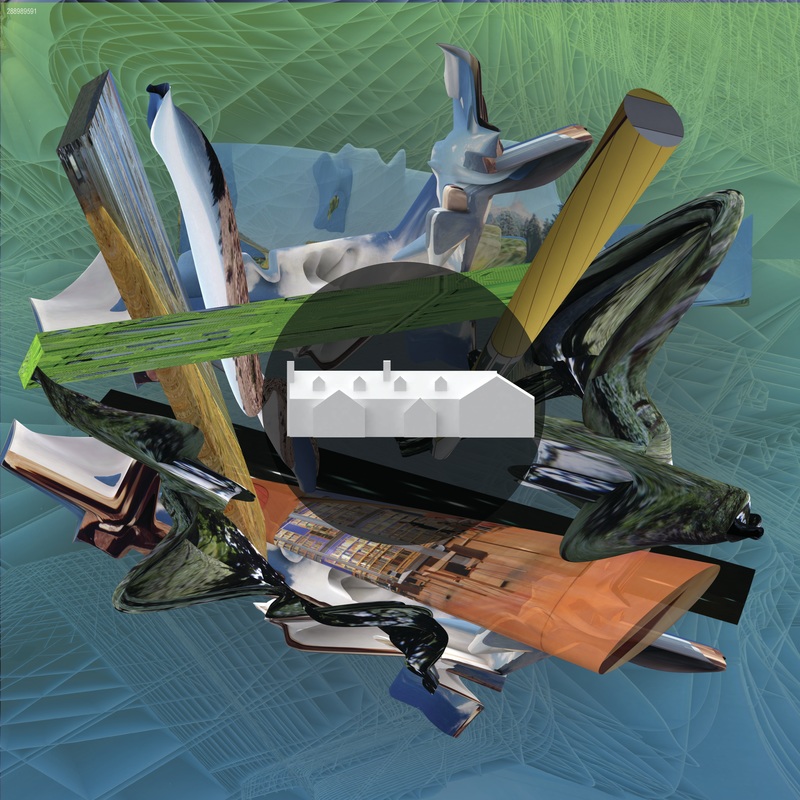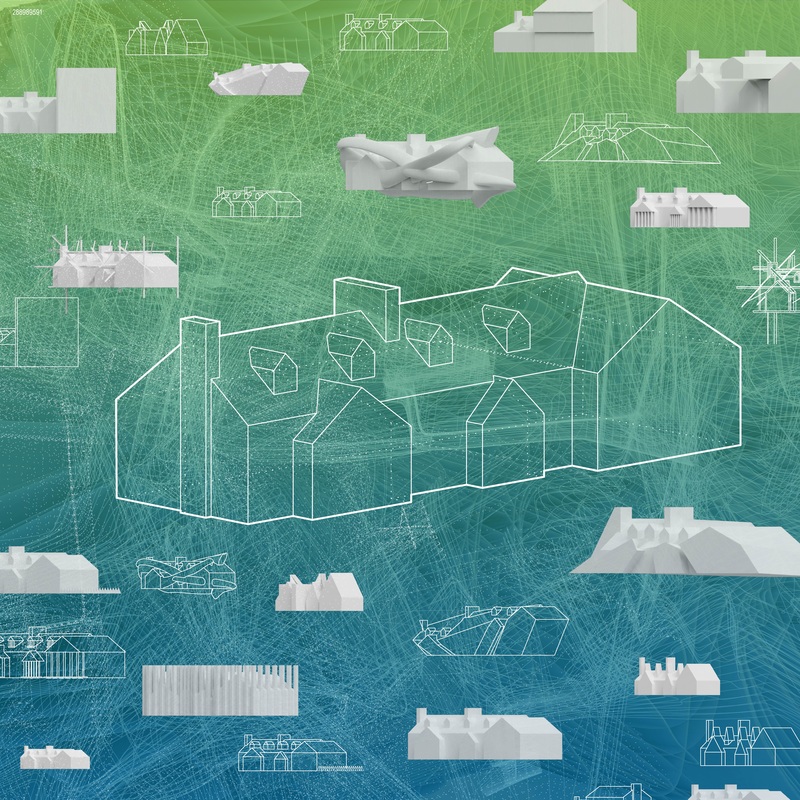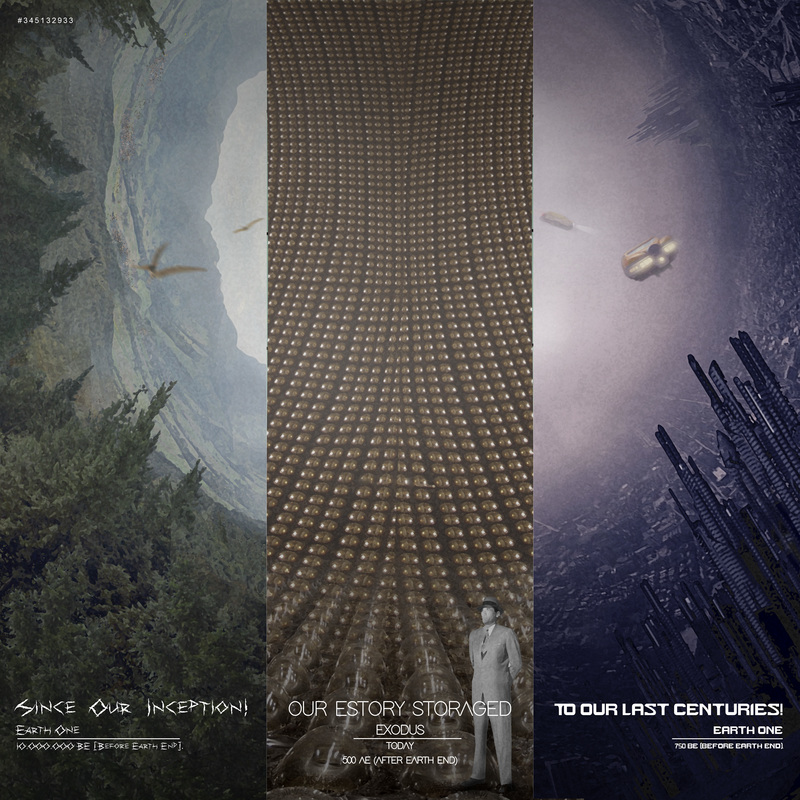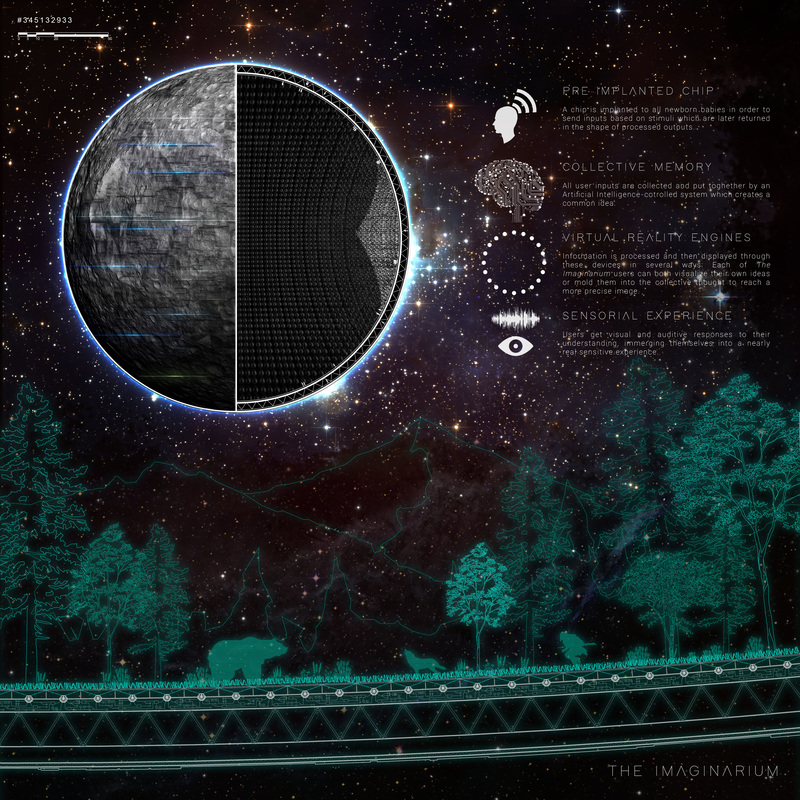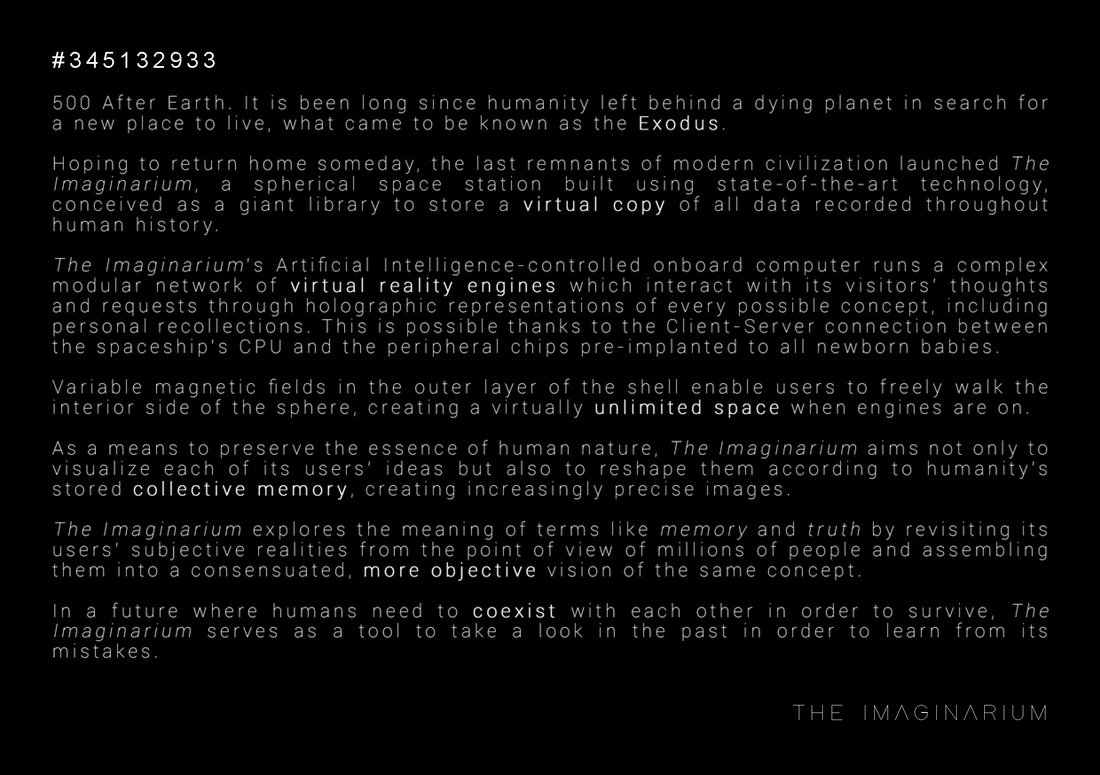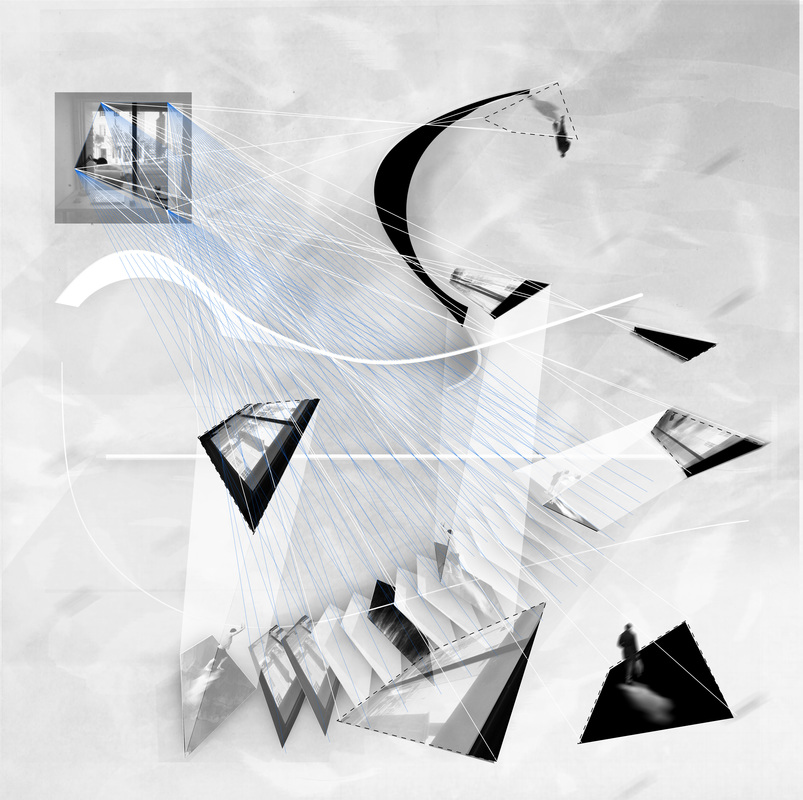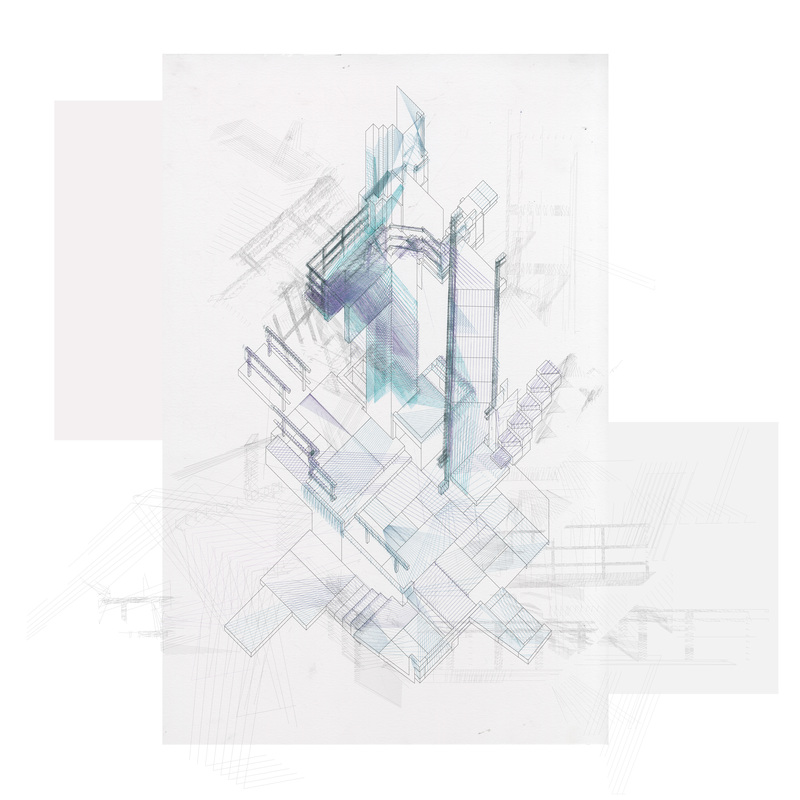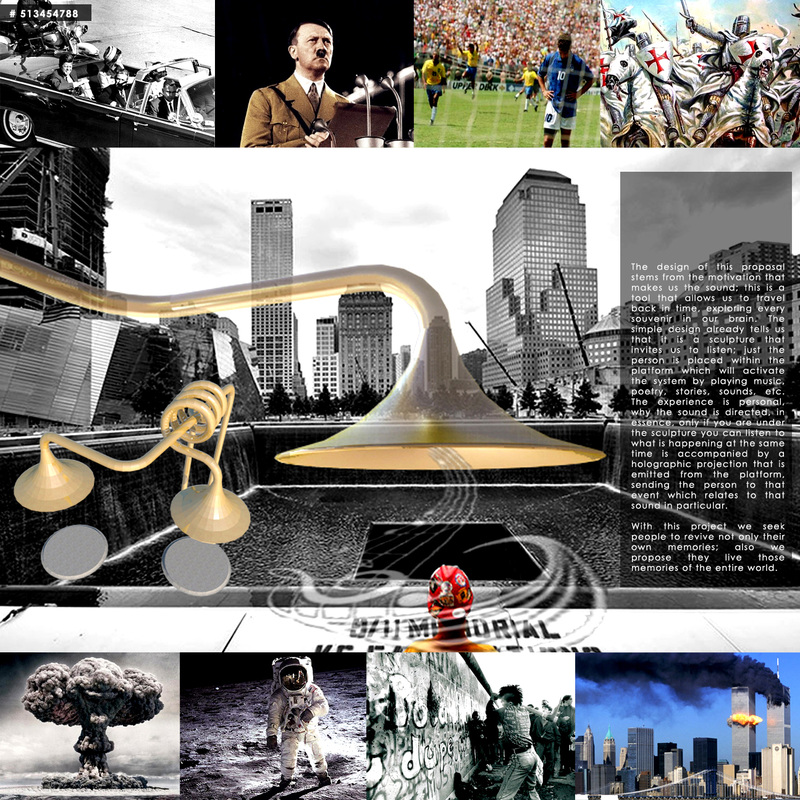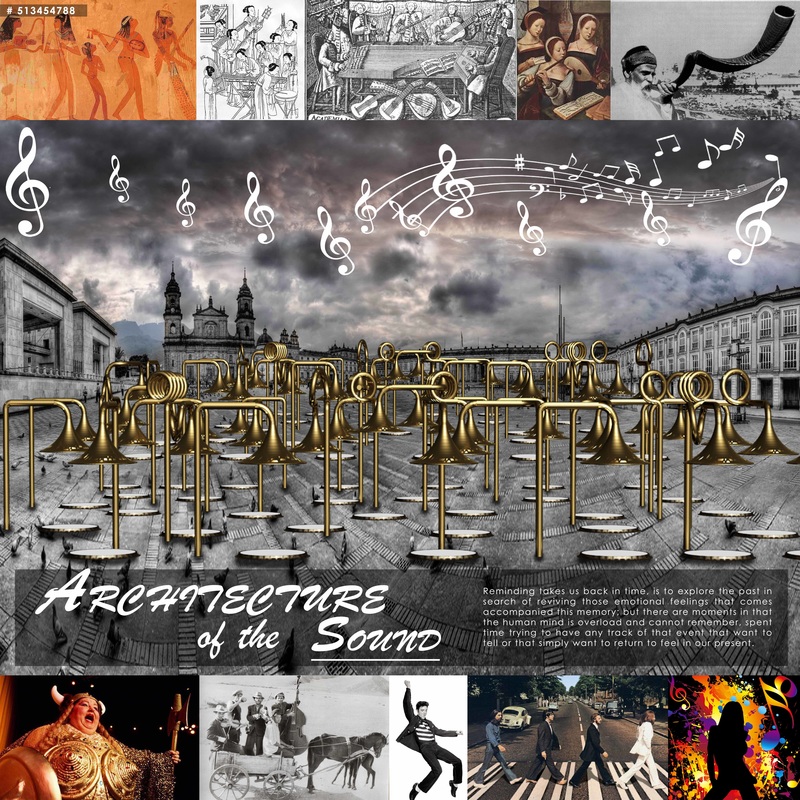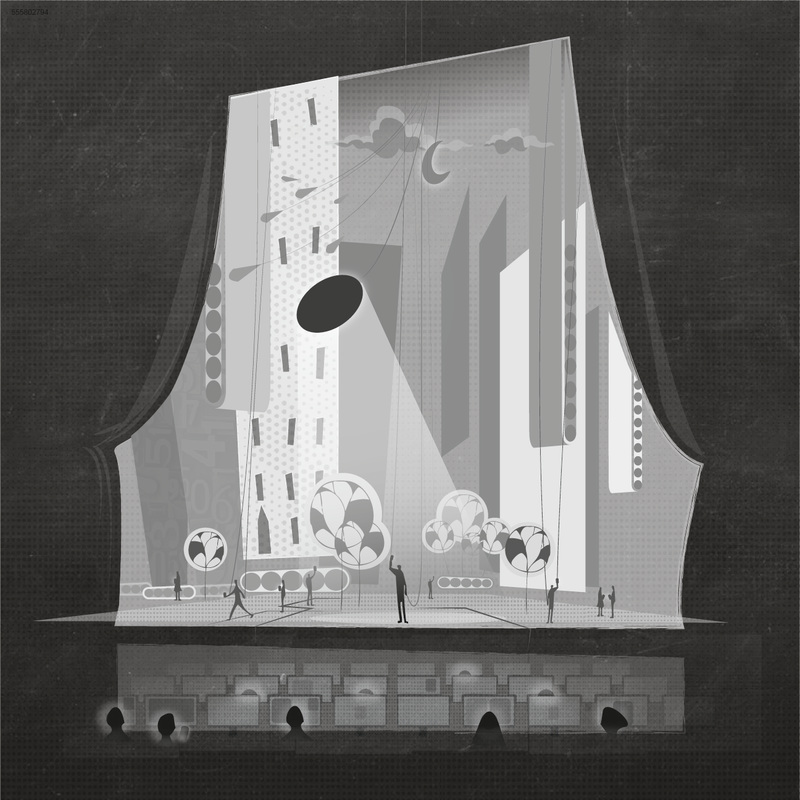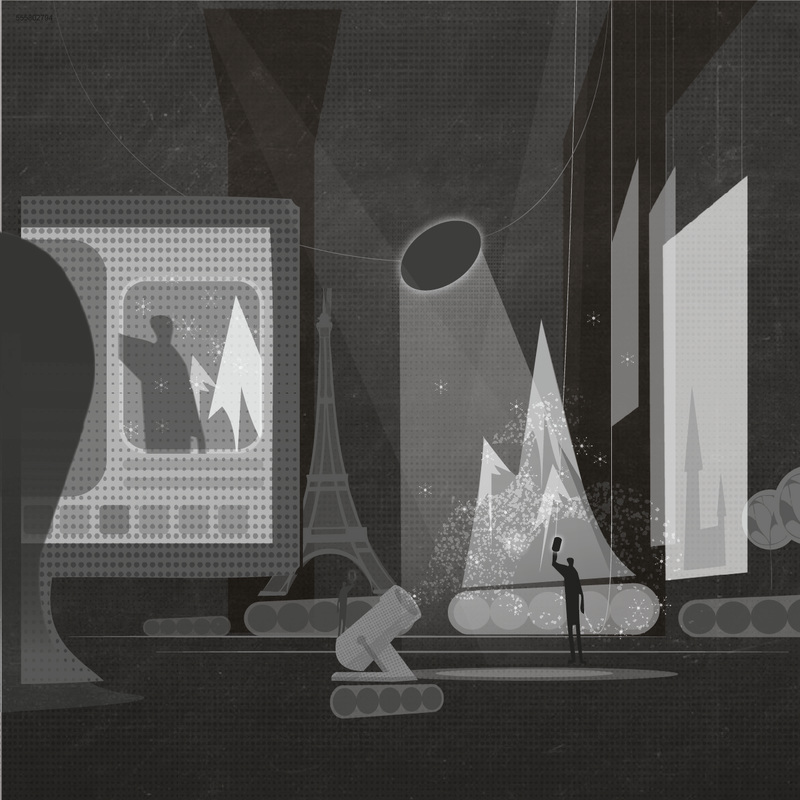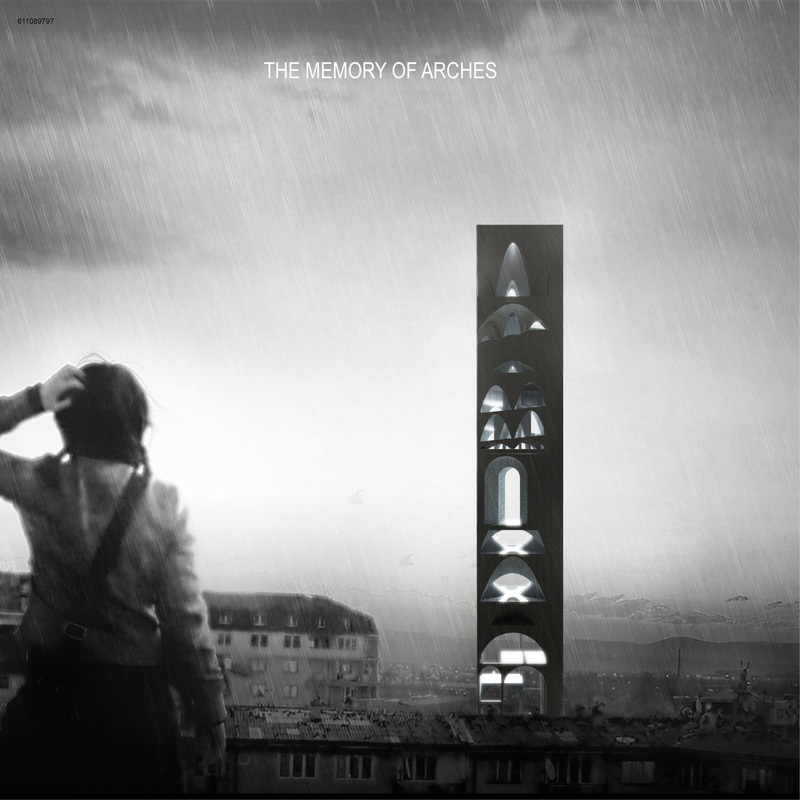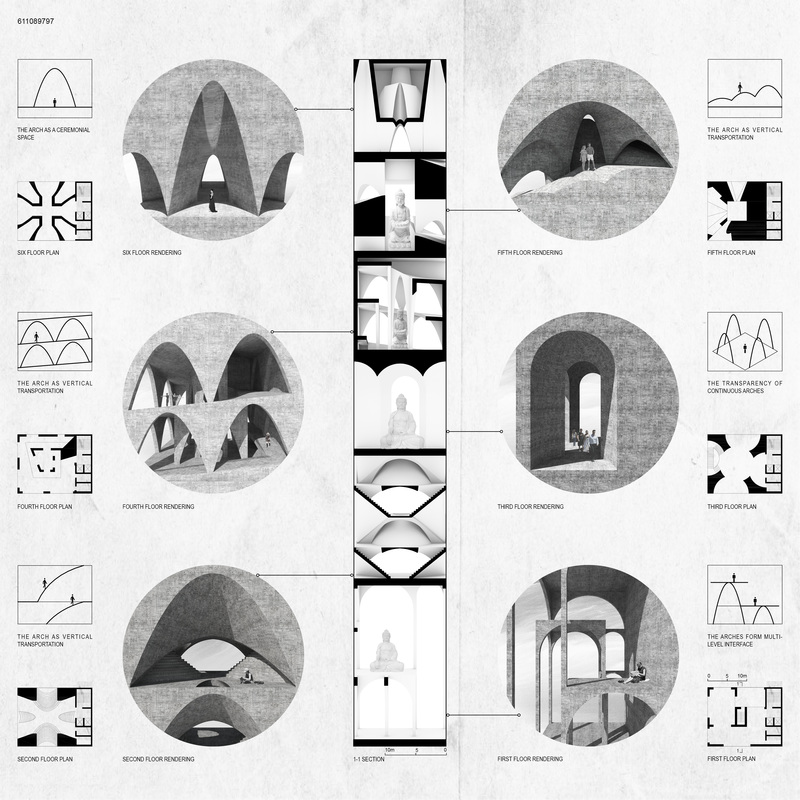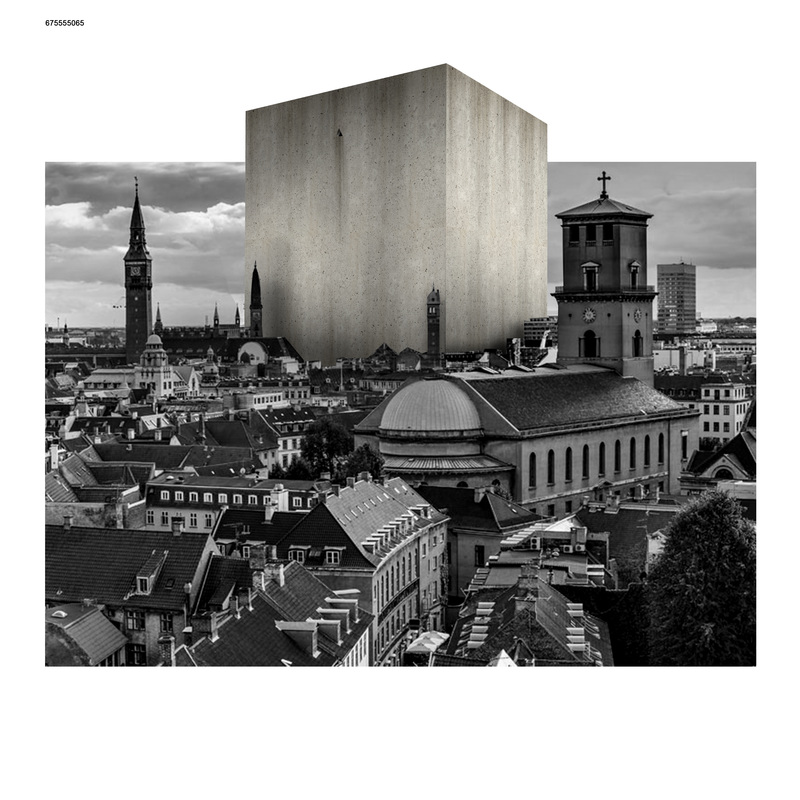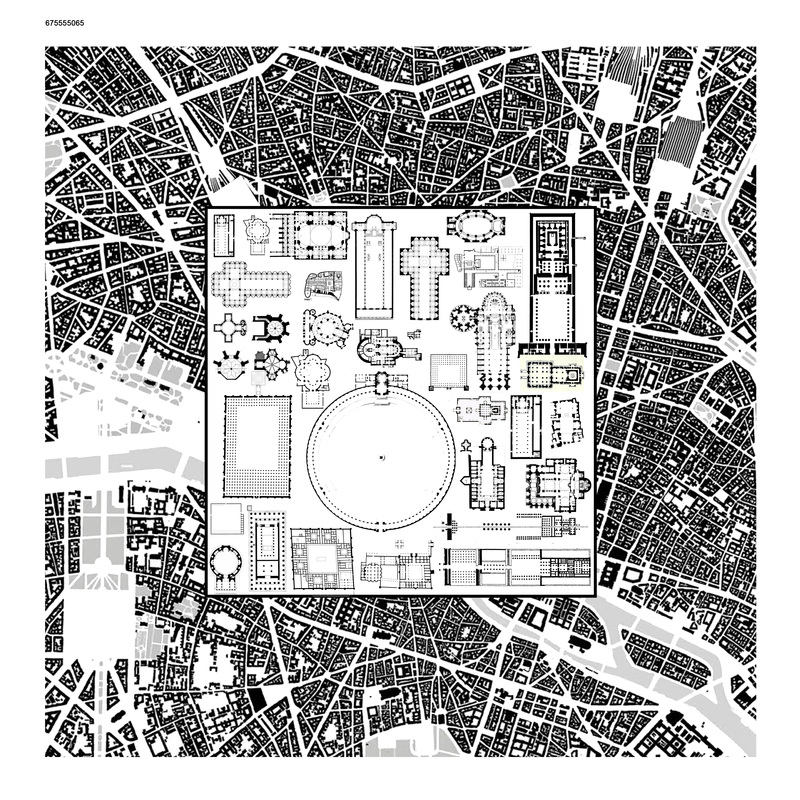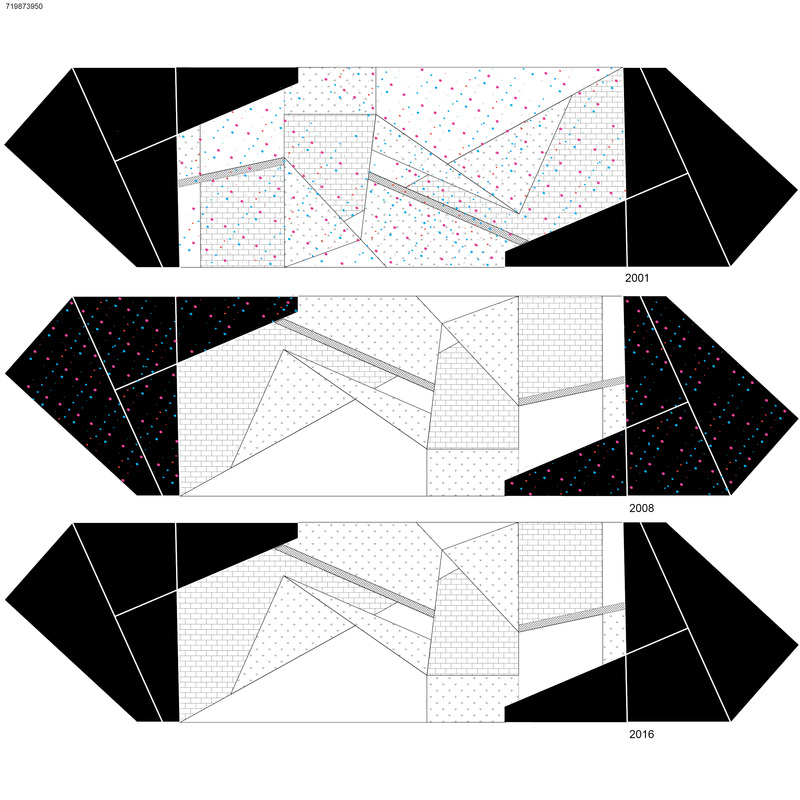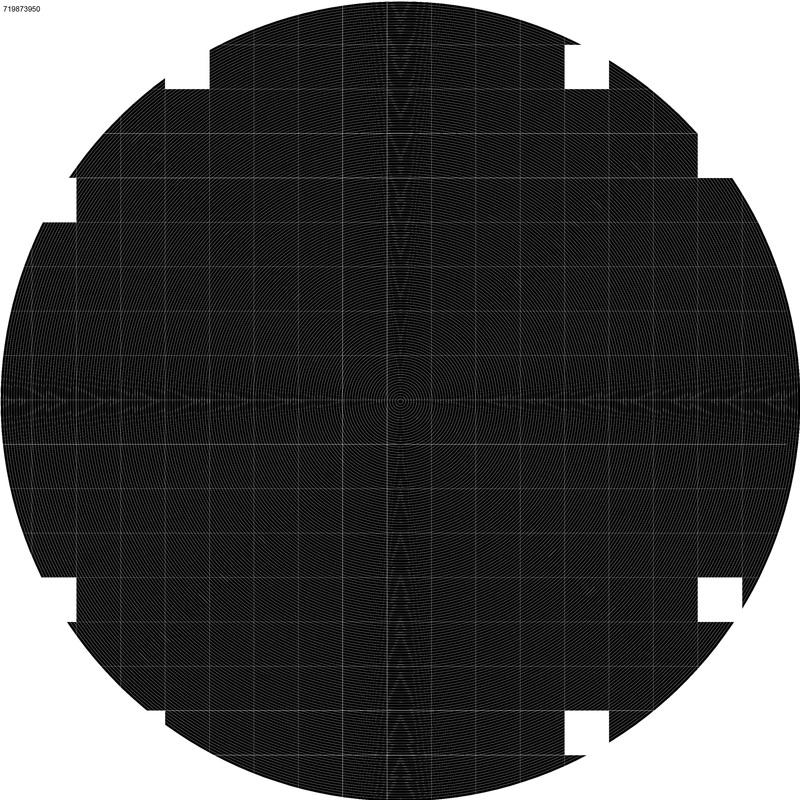COMPETITION POLLING
(11/50)
224158680
The preservation of buildings are trying to hold onto a moment of history. Since the memory of the building is based on the people of the time period, and these people are no longer here, then for who are we preserving this buildings for? These memories are preventing the progression of architecture and instead force us to live among the past. In today’s society there is surge to preserve. Changing historic buildings is thought of as a negative, while it is really a positive. For example old buildings were built “of its time” and do not meet today’s standards in regards to thermal performance, energy efficiency or aesthetics. Altering the past can fix these negatives and allow us to build for the present but it requires us to move past preserving memories. While there is no question that there are buildings that should be preserved for eternity, such as places of great tragedy or achievement. There is a need to create.
Preservation has also contributed to the urban sprawl phenomenon. Since preservation has large limitations due to strict regulation, in order to avoid those limitations new buildings are built outside the city center in order to build new cutting edge buildings. As a society, when will we decide preserving memories is negligible? At what point does something become important enough to preserve it? When should we stop preserving? Whose memoires matter and who’s don’t? Do the affluent areas matter more than the slums? Or are emotions preventing progression? If we allow preservation of memory’s to control our building progression it’s without question that historic city centers will become crumbling ghost towns and the surroundings will become the new epicenter. What’s the difference in avoiding inevitable demise of these historic structures, when a better building could take its place now?
With new advancements in virtual reality, historic memories can be preserved digitally instead of within the built environment. In the virtual world, there won’t be need to upkeep the space. It will stay the same throughout time. With technology advancing, it isn’t inconceivable that virtual buildings will be as realistic as buildings in the built environment. Imagine being able to sit at home and be able to travel to historic buildings virtually. Memories are important but technology can replace how we preserve our memories and allow our society to progress.
Preservation has also contributed to the urban sprawl phenomenon. Since preservation has large limitations due to strict regulation, in order to avoid those limitations new buildings are built outside the city center in order to build new cutting edge buildings. As a society, when will we decide preserving memories is negligible? At what point does something become important enough to preserve it? When should we stop preserving? Whose memoires matter and who’s don’t? Do the affluent areas matter more than the slums? Or are emotions preventing progression? If we allow preservation of memory’s to control our building progression it’s without question that historic city centers will become crumbling ghost towns and the surroundings will become the new epicenter. What’s the difference in avoiding inevitable demise of these historic structures, when a better building could take its place now?
With new advancements in virtual reality, historic memories can be preserved digitally instead of within the built environment. In the virtual world, there won’t be need to upkeep the space. It will stay the same throughout time. With technology advancing, it isn’t inconceivable that virtual buildings will be as realistic as buildings in the built environment. Imagine being able to sit at home and be able to travel to historic buildings virtually. Memories are important but technology can replace how we preserve our memories and allow our society to progress.
(12/50)
237474501
Associate the key
Human memories are mainly activated by relating certain facts or events with each other. These facts function as identifiers for us to recall certain memories. This way to remember is called associative memory and it operates at a specific area of the human brain, the 'hippocampus' or 'seahorse'. Associative memory is literally obtained by digital means and performed by a Content-Addressable Memory (CAM). CAM memory is assessed by content and not by a specific address. Here facts are replaced by keywords. When searching, CAM associates the given keyword to the content and gives back all the addresses that the keyword has been found on. Data word, keyword, key element, architectural element, all terms refer to the same thing: The ingredient that is used to recollect all relevant memories. In that way the user has a complete image, a full understanding of the existence of the memories in the memory pool that are relevant to this key element.
At this proposal, we examine the idea of the keywords that are assigned on an object by its creator. This object after its creation will enter the pool of memories and could be recollected only through the keywords.
Keywords are used as an identity of the object that will enter the pool of memory. The creator decides which keywords suit his or her object. If not chosen wisely, the object might never be recollected. The keywords need to be relevant. That means that they need to represent, apart from the personal view of the creator, the collective understanding. To appeal the collective memory usually the creator will refer to the simplest or most established descriptions. In the case of the architect, several items could be used, that might vary from the volume of a cube to the plan of a basilica. However the success of choosing this elements is not definite. Meaningful architecture can achieved possibly by working primarily on keyword choosing but also on the freedom to mess with every other element.
Human memories are mainly activated by relating certain facts or events with each other. These facts function as identifiers for us to recall certain memories. This way to remember is called associative memory and it operates at a specific area of the human brain, the 'hippocampus' or 'seahorse'. Associative memory is literally obtained by digital means and performed by a Content-Addressable Memory (CAM). CAM memory is assessed by content and not by a specific address. Here facts are replaced by keywords. When searching, CAM associates the given keyword to the content and gives back all the addresses that the keyword has been found on. Data word, keyword, key element, architectural element, all terms refer to the same thing: The ingredient that is used to recollect all relevant memories. In that way the user has a complete image, a full understanding of the existence of the memories in the memory pool that are relevant to this key element.
At this proposal, we examine the idea of the keywords that are assigned on an object by its creator. This object after its creation will enter the pool of memories and could be recollected only through the keywords.
Keywords are used as an identity of the object that will enter the pool of memory. The creator decides which keywords suit his or her object. If not chosen wisely, the object might never be recollected. The keywords need to be relevant. That means that they need to represent, apart from the personal view of the creator, the collective understanding. To appeal the collective memory usually the creator will refer to the simplest or most established descriptions. In the case of the architect, several items could be used, that might vary from the volume of a cube to the plan of a basilica. However the success of choosing this elements is not definite. Meaningful architecture can achieved possibly by working primarily on keyword choosing but also on the freedom to mess with every other element.
(13/50)
288989591
The persistence of time leaves humans in an unstable existence. By the time stimuli reach the mind, the “present” is already a past memory - forever lagging behind the current moment. In these memories we understand the world around us, we perceive light, space, and our own actuality. Although this process is crucial to our existence and understanding of the world, it is in a sense flawed, distorting the world as it truly exists. Memory compounds architectural form, external stimuli, and internal conceptions into one synthesized whole. A cathedral may be perceived as a beautiful mega-structure but a foul smelling candle burning in a side chapel adds a layer of distortion when recalled as a memory. Continual occupation hides original impressions, idealization leads to perceived perfection, and further knowledge changes meaning. In each semi-opaque layer of distortion, the memory becomes masked, dishonest in its representation of space.
While this process is subject to a certain contamination, memory is in fact the truest form of representation a built work can possess. The ultimate goal of architecture is to be experienced, to act as a framework for the human narrative. While the masks which cover original experiences seem to disfigure the memory, they should be read as relevant data, a library of human existence projected into space. These masks create the means by which spatial experiences cross their thresholds into new territory – instructing occupants on how to perceive their environment and understand life. It is through memory architecture escapes its static, tangible existence - allowing it to travel away from its foundation and be eternally preserved, safe from its material reality.
While it still persists through humans’ experiential projections, architecture is increasingly archived into an artificial network. The digital age has brought many technologies with artificial memories into existence and the way in which we now record our lives rejects the embodied nature of memory. The network adds layers of deformation which flatten experiences and solidify memory into a purely linear path (images recalled in timelines and archives rather than the vague, organic nature of recollection). Architecture gains its meaning through human experience but in the digital age our memory is no longer our own, it lives in a partially artificial dimension. In this time, we must not lose our ability to decipher memory and read the masked layers of experiential data, for within lies an architecture of truth and power.
While this process is subject to a certain contamination, memory is in fact the truest form of representation a built work can possess. The ultimate goal of architecture is to be experienced, to act as a framework for the human narrative. While the masks which cover original experiences seem to disfigure the memory, they should be read as relevant data, a library of human existence projected into space. These masks create the means by which spatial experiences cross their thresholds into new territory – instructing occupants on how to perceive their environment and understand life. It is through memory architecture escapes its static, tangible existence - allowing it to travel away from its foundation and be eternally preserved, safe from its material reality.
While it still persists through humans’ experiential projections, architecture is increasingly archived into an artificial network. The digital age has brought many technologies with artificial memories into existence and the way in which we now record our lives rejects the embodied nature of memory. The network adds layers of deformation which flatten experiences and solidify memory into a purely linear path (images recalled in timelines and archives rather than the vague, organic nature of recollection). Architecture gains its meaning through human experience but in the digital age our memory is no longer our own, it lives in a partially artificial dimension. In this time, we must not lose our ability to decipher memory and read the masked layers of experiential data, for within lies an architecture of truth and power.
(15/50)
357111454
He receives an old photo from his sister. That was his room fifteen years ago, when his family was about to move out of their first apartment. The camera was facing the window, from which warm orange lights reflected his little bedroom with packed clothes and toys.
But, I didn’t have a large window in my room. It was really high up there, and kind of small. Of course you did, mom gave you the room with larger window. I wanted that too.
The nights he spent with Grimm's' Fairy Tales on the mat against cold brick wall was still fresh in his mind. It was a long winter, the winter he received the book from his grandfather in Christmas. He is trapped by this photo. The almost realistic caption catches him.
Was I too short to notice the window, or that wasn't even my room, or maybe I did have the
window.
The more he tries to reconstruct his room, the less he is certain about his memory. In the end, he cannot even distinguish which part was the truth and which was altered or totally made up by his imagination. He wishes the view of photo could have turned a slight angle, so that he can check if his favorite Spiderman poster was on the wall. He wishes, if the temperature, the smell, the sound of the heater on and off…anything that could have been recorded, will allow him to reference all these sensible shatters of memory in his head.
Memory is like looking in to a space through a slice of window, which is visible but restricted and intangible, with the reflection of present at back. Absolute reality does not exist in any form of memory. Both digital and human memory involve a certain degree of abstraction when mimicking the reality.
The memory of digital devices do not restore the reality. Instead, it is a consistent reconstruction of existing conditions. It contains only visual information, yet evades every other aspects of memory.
Memory to us is a personal recollection of objects, space and events, that incorporate time as an important factor. Human memory are fragmental, individual, and perceptual. The fragments of memory can be magnified, minimized, and distorted through a collective experience over time.
He cleared his mind, put the photo back into the envelop. They are both really, yet, distorted.
But, I didn’t have a large window in my room. It was really high up there, and kind of small. Of course you did, mom gave you the room with larger window. I wanted that too.
The nights he spent with Grimm's' Fairy Tales on the mat against cold brick wall was still fresh in his mind. It was a long winter, the winter he received the book from his grandfather in Christmas. He is trapped by this photo. The almost realistic caption catches him.
Was I too short to notice the window, or that wasn't even my room, or maybe I did have the
window.
The more he tries to reconstruct his room, the less he is certain about his memory. In the end, he cannot even distinguish which part was the truth and which was altered or totally made up by his imagination. He wishes the view of photo could have turned a slight angle, so that he can check if his favorite Spiderman poster was on the wall. He wishes, if the temperature, the smell, the sound of the heater on and off…anything that could have been recorded, will allow him to reference all these sensible shatters of memory in his head.
Memory is like looking in to a space through a slice of window, which is visible but restricted and intangible, with the reflection of present at back. Absolute reality does not exist in any form of memory. Both digital and human memory involve a certain degree of abstraction when mimicking the reality.
The memory of digital devices do not restore the reality. Instead, it is a consistent reconstruction of existing conditions. It contains only visual information, yet evades every other aspects of memory.
Memory to us is a personal recollection of objects, space and events, that incorporate time as an important factor. Human memory are fragmental, individual, and perceptual. The fragments of memory can be magnified, minimized, and distorted through a collective experience over time.
He cleared his mind, put the photo back into the envelop. They are both really, yet, distorted.
(16/50)
513454788
ARCHITECTURE OF THE SOUND
Have the ease of recall?
Is possible stimulate our mind for to remember?
The mind human works as a mechanism without rest always is processing information. All our actions are coordinated by the brain, which is capable of store each thought, action, emotion, etc., and to the same time allows us to remember the great majority of our experiences.
Reminding takes us back in time, is to explore the past in search of reviving those emotional feelings that comes accompanied this memory; but there are moments in that the human mind is overload and cannot remember, spent time trying to have any track of that event that want to tell or that simply want to return to feel in our present.
This architectural proposal seeks to that essence to be able to remember, this is why we refer to one of the perceptions of sensations that always has been with us, the sound. This enables us to stimulate our mind to remember an important event of our lives; for a moment consider the sound of nature, for example the sound of the breeze, this suggests us tranquility; and that thought is product of a recall. Now think in them sounds that have to work, for example the music, a simple song moves us in the time, connects us with sensations and emotions that are product of our memories, to its time the music transmits culture; those perceptions and sensations of the world captured in sounds.
The design of this proposal stems from the motivation that makes us the sound; this is a tool that allows us to travel back in time, exploring every souvenir in our brain. The simple design already tells us that it is a sculpture that invites us to listen; just the person is placed within the platform which will activate the system by playing music, poetry, stories, sounds, etc. The experience is personal, why the sound is directed, in essence, only if you are under the sculpture you can listen to what is happening at the same time is accompanied by a holographic projection that is emitted from the platform, sending the person to that event which relates to that sound in particular.
With this project we seek people to revive not only their own memories; also we propose they live those memories of the entire world.
Have the ease of recall?
Is possible stimulate our mind for to remember?
The mind human works as a mechanism without rest always is processing information. All our actions are coordinated by the brain, which is capable of store each thought, action, emotion, etc., and to the same time allows us to remember the great majority of our experiences.
Reminding takes us back in time, is to explore the past in search of reviving those emotional feelings that comes accompanied this memory; but there are moments in that the human mind is overload and cannot remember, spent time trying to have any track of that event that want to tell or that simply want to return to feel in our present.
This architectural proposal seeks to that essence to be able to remember, this is why we refer to one of the perceptions of sensations that always has been with us, the sound. This enables us to stimulate our mind to remember an important event of our lives; for a moment consider the sound of nature, for example the sound of the breeze, this suggests us tranquility; and that thought is product of a recall. Now think in them sounds that have to work, for example the music, a simple song moves us in the time, connects us with sensations and emotions that are product of our memories, to its time the music transmits culture; those perceptions and sensations of the world captured in sounds.
The design of this proposal stems from the motivation that makes us the sound; this is a tool that allows us to travel back in time, exploring every souvenir in our brain. The simple design already tells us that it is a sculpture that invites us to listen; just the person is placed within the platform which will activate the system by playing music, poetry, stories, sounds, etc. The experience is personal, why the sound is directed, in essence, only if you are under the sculpture you can listen to what is happening at the same time is accompanied by a holographic projection that is emitted from the platform, sending the person to that event which relates to that sound in particular.
With this project we seek people to revive not only their own memories; also we propose they live those memories of the entire world.
(17/50)
555802794
Selfies, check-ins, and even our personal search history
all seamlessly work together in recalling where we are and what
we are doing. Technology, especially through the use of social
media, has entirely changed how we experience not only our built
environment but how it has molded our memories. Much like a
theatrical production where the lights, interchangeable scenes,
and wardrobe changes all seem to effortlessly show a reality of
both truth and fiction. So also, the built environment becomes the
backdrop to our stories as we take the leading role and our digital
interactions create proof that we in fact were there.
This investigation takes us behind the scenes and
highlights the fact that we are now all actors and viewers in this
new physical existence of memory. It also exposes the reality that
our environment, both built and natural, are no longer spaces
meant just to be inhabited, but have also become two-dimensional
backdrops in the production of our digitized life.
all seamlessly work together in recalling where we are and what
we are doing. Technology, especially through the use of social
media, has entirely changed how we experience not only our built
environment but how it has molded our memories. Much like a
theatrical production where the lights, interchangeable scenes,
and wardrobe changes all seem to effortlessly show a reality of
both truth and fiction. So also, the built environment becomes the
backdrop to our stories as we take the leading role and our digital
interactions create proof that we in fact were there.
This investigation takes us behind the scenes and
highlights the fact that we are now all actors and viewers in this
new physical existence of memory. It also exposes the reality that
our environment, both built and natural, are no longer spaces
meant just to be inhabited, but have also become two-dimensional
backdrops in the production of our digitized life.
(18/50)
611089797
The Memory of Arches
In Oliver Sacks’ study, memory disorder may cause by memory distortion and external influence. But there is a power of contradiction resides in imperfection of memory, and this kind of imperfection could stimulate people’s imagination and creativity.
In ancient china, Buddhist pagodas are built from wood, constituted of layering arched windows, so people’s perception of the space are unavoidably framed by these arched windows. When revolving rising in the pagoda, people collect a series of fragmented memories of Buddha worship in terms of varied distance and angle, and all of them are closely engaged with arch elements. By documenting pagodas all around the world, we found that arch is the most primitive and fundamental building element. In this competition, we propose a new memorial Buddhist pagoda by juxtaposing memorial pieces that collected from different time and space.
1-Arch vs Buddha’s Location
Light is subtly filtered by the arches before casting directly on the Buddha, this filtration reinforce the smooth finish and also divinity of the Buddha. Different layouts between arch and Buddha create a new unfamiliar continuity in this project.
2-Arch vs Hidden Transportation
In both middle age’s cathedrals in Europe and ancient pagodas in china, we found that double-layer arches could create a mezzanine which is cunningly combined with vertical transportation that working exceptionally for servant space. This hidden space inspire us invent a new relationship between arch and transportation.
3-Arch vs Spacial Transparency
Either Gothic cathedral or Chinese Buddhist pagoda, lighting is altered by the height and span of arch. In this project, we reconsolidate the acknowledged form of arch and tend to reinvent a new arch system that defined by direction, dimension and memorial distortion.
In Oliver Sacks’ study, memory disorder may cause by memory distortion and external influence. But there is a power of contradiction resides in imperfection of memory, and this kind of imperfection could stimulate people’s imagination and creativity.
In ancient china, Buddhist pagodas are built from wood, constituted of layering arched windows, so people’s perception of the space are unavoidably framed by these arched windows. When revolving rising in the pagoda, people collect a series of fragmented memories of Buddha worship in terms of varied distance and angle, and all of them are closely engaged with arch elements. By documenting pagodas all around the world, we found that arch is the most primitive and fundamental building element. In this competition, we propose a new memorial Buddhist pagoda by juxtaposing memorial pieces that collected from different time and space.
1-Arch vs Buddha’s Location
Light is subtly filtered by the arches before casting directly on the Buddha, this filtration reinforce the smooth finish and also divinity of the Buddha. Different layouts between arch and Buddha create a new unfamiliar continuity in this project.
2-Arch vs Hidden Transportation
In both middle age’s cathedrals in Europe and ancient pagodas in china, we found that double-layer arches could create a mezzanine which is cunningly combined with vertical transportation that working exceptionally for servant space. This hidden space inspire us invent a new relationship between arch and transportation.
3-Arch vs Spacial Transparency
Either Gothic cathedral or Chinese Buddhist pagoda, lighting is altered by the height and span of arch. In this project, we reconsolidate the acknowledged form of arch and tend to reinvent a new arch system that defined by direction, dimension and memorial distortion.
(20/50)
719873950
UNDER THE INFLUENCE
I believe people are under the influence of technology drunk from its relentless availability. Will we ever have a moment of clarity, we might not need one because we should remember virtually all information is stored and readily available. A duality presents itself memory and reality which is the tension between the objective and subjective often blurred with time and environment.
Personal memory is the subjective, events are recorded per the individual's criteria at that moment, the subject controls the experience. Built environments are objective and have a different criteria their memories are asked to better anticipate and respond to current and forecasted conditions but how will they know, who is influencing them, they are by design embedded with the memories of the subjects. The link between memory and the built environment is objective information. Designers make decisions that confront data and sensibilities which perform in environments, the personal degree of this experience is objective and not the task of Architecture, consciously.
Today we capture and recall events at near light speed but do we ever really need to match memories with reality, have we ever been able to do so? Do memories only existent in the past? We can use our memory for what an individual values as important and its worth collectively. For me this question of memory and its relationship to technology is as fresh as it was when the printing press was invented. I believe these questions are not new but will continue to exponentially grow with time so the discussion is more about the application of memory into the built environment. Remember the child's game of sitting in a circle and passing a story through each member of the circle and at the end enjoying the anticipation of finding out how much the story changed from start to finish. I feel time is playing this game with generations and will continue as technology becomes faster and develops its own sensibilities, how exciting.
I believe people are under the influence of technology drunk from its relentless availability. Will we ever have a moment of clarity, we might not need one because we should remember virtually all information is stored and readily available. A duality presents itself memory and reality which is the tension between the objective and subjective often blurred with time and environment.
Personal memory is the subjective, events are recorded per the individual's criteria at that moment, the subject controls the experience. Built environments are objective and have a different criteria their memories are asked to better anticipate and respond to current and forecasted conditions but how will they know, who is influencing them, they are by design embedded with the memories of the subjects. The link between memory and the built environment is objective information. Designers make decisions that confront data and sensibilities which perform in environments, the personal degree of this experience is objective and not the task of Architecture, consciously.
Today we capture and recall events at near light speed but do we ever really need to match memories with reality, have we ever been able to do so? Do memories only existent in the past? We can use our memory for what an individual values as important and its worth collectively. For me this question of memory and its relationship to technology is as fresh as it was when the printing press was invented. I believe these questions are not new but will continue to exponentially grow with time so the discussion is more about the application of memory into the built environment. Remember the child's game of sitting in a circle and passing a story through each member of the circle and at the end enjoying the anticipation of finding out how much the story changed from start to finish. I feel time is playing this game with generations and will continue as technology becomes faster and develops its own sensibilities, how exciting.
PAGE 1
<PREV PAGE 1 2 3 4 5 NEXT PAGE>
Questions: arch out loud team | 317.490.6142 | info@archoutloud.com

